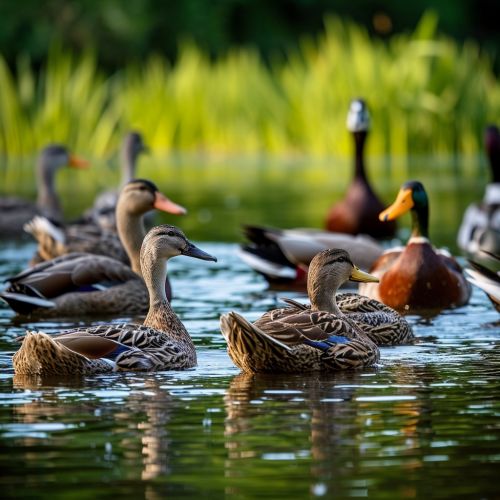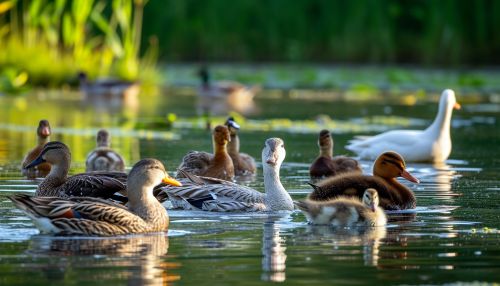Waterfowl
Introduction
Waterfowl are members of the Anatidae of birds, which includes ducks, geese, and swans. These species are known for their ability to float on the surface of water due to their specialized anatomy and physiology. They are found in both freshwater and marine environments around the world, and their distribution and behavior are influenced by a variety of ecological factors.


Anatomy and Physiology
Waterfowl have a unique anatomy that allows them to thrive in aquatic environments. Their bodies are streamlined and their legs are set far back on their bodies, enabling efficient swimming. Their feet are webbed, which increases the surface area for pushing against water. The feathers of waterfowl are waterproof due to a waxy coating that is spread from the uropygial gland during preening.
Waterfowl have a high metabolic rate to maintain their body temperature in cold water. They have a countercurrent heat exchange system in their legs, which minimizes heat loss. Their bones are pneumatic, containing air spaces connected to the respiratory system, which aids in buoyancy.
Classification and Species
The family Anatidae is divided into three main subfamilies: the Anserinae (swans and geese), the Anatinae (dabbling and diving ducks), and the Oxyurinae (stiff-tailed ducks and sea ducks). There are approximately 146 species of waterfowl worldwide.
Ecology and Behavior
Waterfowl are typically found in wetlands, rivers, lakes, and coastal areas. They are migratory, with many species traveling long distances between breeding and wintering grounds. Migration routes, known as flyways, are typically north-south oriented.
Waterfowl are omnivorous, feeding on a variety of plant and animal matter. Some species are specialized feeders, such as the canvasback, which feeds primarily on aquatic tubers, or the merganser, which feeds on fish.
Conservation and Management
Many species of waterfowl have been impacted by habitat loss, pollution, and hunting. Conservation efforts include habitat restoration, regulation of hunting, and captive breeding programs. The North American Waterfowl Management Plan is a key initiative that has helped to restore waterfowl populations in North America.
